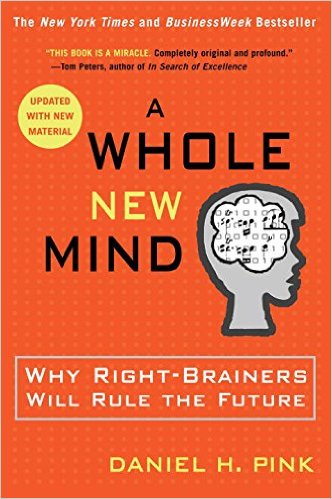Psychology of Interior Design: Does My Designer Get Me?
Sometimes, we have clients who will say, "YOU GET ME!" We take that as a high compliment. Though we aren't so bold as to say that we know everything about our clients, we do make it our work to build relationships with our clients beginning with a lot of discussion, listening and observation. When we can connect with our clients to the point where they feel understood, only then have we built a rock-solid foundation for a successful design project together.
Much of the path to understanding our clients is non-verbal and more indirect, yet we find those subtle cues to be essential in our design process. In today's entry, Jennifer shares her approach to understanding her clients through psychology.
Though harder to measure, psychology contributes heart and soul to the design process even if it remains open for some interpretation.
So how does this play out for your interior design project? Jennifer fills us in...
_______________________________________________________________________________________________________
Amy - What role does psychology play in how you design interiors?
Jennifer - Psychology of interiors is mostly about observation, experience and practice. "Reading into people" is an important part of how I observe. I will stop and ask myself or my client, "What does that expression mean?" "What are you not saying?" "How should I interpret that reaction?" Understanding non-verbal cues is an important part of how I understand whom I am working with. Sometime people aren't sure how to articulate what they want; it's particularly hard to do that using the language of the industry.
Words are important, but reactions and responses are confirmations.
Amy - What kind of reactions do you look for?
Jennifer - A facial expression, a glance between a couple, a subtle look in their eyes helps me to infer what they mean to communicate. I'm not always sure how to interpret those cues, so I will verify with a client when I'm not sure if I'm reading them correctly. Someone less expressive could be much harder to get a reaction from about a design direction, so I may need to work differently to understand that person's emotional response to design.
I was working with a client once, reviewing furniture and fabrics. We hadn't gotten them quite right, but then, she had a look of pure joy. That's the expression I'd been waiting for. At that point, I knew I had it right; I hit it on the head. She was so happy and that was gratifying.


Take the UC Berkeley Body Language Quiz | Test Your Emotional Intelligence - From the UC Berkeley Greater Good Science Center which studies the psychology, sociology, and neuroscience of well-being, and teaches skills that foster a thriving, resilient, and compassionate society.
Amy - Is it easy to misread a client?
Jennifer - I never took a psychology class. It’s observation. I’m not always right, so sometimes I have to check and ask, "Am I interpreting you correctly that this is what you want to do?"
I have to verify. I watch, observe, take notes and then verify. There have been times when I thought I was right and wasn’t. I’ve made the mistake of assuming in the past.
Amy - Sometimes interior design can be perceived as all touchy and feely. How does pyschology appeal to the more analytical among us?
Jennifer - There is an interplay between science and art, evidence-based design and psychology of design. We employ both perspectives, not just one or the other. We combine creative sensibility with factual objectivity so that we can make meaningful as well as intelligent decisions throughout an interior design project.
Amy - That hybrid approach to design is important, and there is growing demand for understanding human nuance in an era of big data.
In A Whole New Mind, author Daniel Pink observes that:
"We are moving from an economy and a society built on the logical, linear, computer-like capabilities of the Information Age to an economy and a society built on the inventive, empathetic, big-picture capabilities of what’s rising in its place, the Conceptual Age."
Pink argues that we are rooted in an "L-Directed" left-brained analytical world, and need to balance our thinking with "R-Directed" right-brained creativity. An R-Directed thinker or designer will exercise what Pink calls "high concept" and "high touch" aptitudes.
Jennifer - Can you unpack what "high concept" and "high touch" are for our readers?
Amy - Pink states it best,

"High concept involves the capacity to detect patterns and opportunities, to create artistic and emotional beauty, to craft a satisfying narrative, and to combine seemingly unrelated ideas into something new.
High touch involves the ability to empathize with others, to understand the subtleties of human interaction, to find joy in one’s self and to elicit it in others, and to stretch beyond the quotidian in pursuit of purpose and meaning."
Jennifer - Empathy, in particular, is important in our work. Empathy is the ability to place yourself in someone else's shoes and to use intuition to understand what other people are feeling. Empathy allows you "to see with their eyes, and to feel with their hearts." That face-to-face, eye-to-eye interaction is so critical to understanding our clients.
Amy - Yes! Daniel Goleman echoes that thought in his book, Emotional Intelligence:
"People's emotions are rarely put into words; far more often they are expressed through other cues. Just as the mode of the rational mind is words, the mode of the emotions is nonverbal." Daniel Pink emphasizes: "And the main canvas for displaying those emotions is the face."
*Read more in the opening excerpt of A Whole New Mind, Why Right-Brainers Will Rule the Future
Amy - So, Jennifer, what's the takeaway for someone working through an interior design project?
Jennifer - Ask yourself, "Does it bring joy and satisfaction?". Follow your heart. There are instances where a client is in love with something that I am not. But it's not for me, and if it contributes to the overall project and client goals, I go with it.
The goal is not to have a client jump up and down with excitement, I just want confirmation that I'm headed down the right path. Sometimes it's only a subtle look that indicates I'm on the right track. They feel comfortable. Like horses, when they're in a comfortable state, they exhale. It's subtle, but it tells you they're relaxed and in a good place.
Don't be afraid to express what you are feeling and thinking. Being open and honest is in your best interest and will result in a relationship with your interior designer that will make you feel understood, and interior design that you can breathe easy living and working in.
____________________________________________________________________________________________________
NEXT UP!
In our next Designer Journal entry, we will hear from our designer, Chelsea Niemitz, on the influence of evidence-based design.


